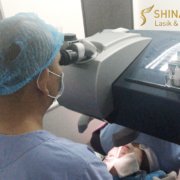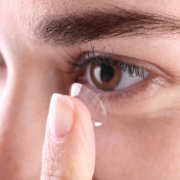Who doesn’t want clear eyesight? None, right?
Everyone most certainly loves the convenience of a clear vision, but unfortunately, not all are blessed with that.
Whether you were born with vision problems or they developed over time, you may have found that corrective lenses are required for you to enjoy everyday life. While many people with vision problems wear contact lenses, there are risks that accompany the many benefits of contacts.
In comparison to glasses, contacts are more convenient, provide better field-of-view, and increase peripheral awareness. However, the negative aspects of wearing contacts, especially when used incorrectly, are plentiful.
Risks of Contact Lens
First, wearing contact lenses can cause several serious eye conditions including infections, corneal abrasions, and ulcers. These conditions may develop at different rates for individuals and will damage your eyes.
In some extreme cases, these conditions can cause permanent blindness. For example, some people that wear contact lenses may leave the lenses in for long periods of time or sleep with their contacts in. When the lenses are eventually removed, the consequential dryness of the lenses can easily scratch your eye.
No matter how small the abrasion is, the pain is noticeable and may leave your affected eye extremely sensitive to light. When an incident like this takes place, you will not be able to determine the seriousness of the developing problem until you actually remove the contact.
Sometimes, these conditions develop slowly over time. Symptoms of eye irritation can indicate a more serious problem. So, always seek out a diagnosis from an eye care professional to determine whether your eye irritation is developing into a serious problem.
Second, contact lenses are expensive. If you wear disposable contact lenses daily and replace them every two weeks — the most common lens replacement schedule recommended by eye doctors — you can expect constant and more expenses. Depending on your specific eye complications, wearing contact lenses could cost you even more than having LASIK.
Additionally, studies show that contact lens wearers are 10 times more likely to experience significant vision loss or blindness from wearing contact lenses than from having LASIK eye surgery.
Why having LASIK has more benefits
When LASIK is regularly performed by an experienced ophthalmologist in a facility with excellent equipment and a careful screening process that ensures good candidacy, the rate of success is very high.
While complications from contact lenses accumulate over the years, those from LASIK are minimal to none and it also presents quick healing and recovery time.
As far as your expense if concern, LASIK requires an upfront expense, however, compared to those who wear contact lenses, its benefit over time has a way bigger value.
LASIK patients appreciate not having to wear contact lenses. Also, they don’t worry about the constant dangers of wearing contact lens. Finally, they enjoy the convenience of waking up every morning and going to sleep every night without the task of inserting or removing lenses.
Research and results also show, unanimously, that LASIK is a safe procedure.
In fact, research shows that both are safe in their own ways. The widespread use of contacts indicates that many people are willing to take some risks to correct their vision.
In the same way, LASIK is a relatively less risky option than a lifetime of wearing contact lenses, according to comprehensive studies.
With technological advances such as faster, blade-free lasers, and more experienced surgeons, LASIK has become a preferred option for improving eyesight. Improving your vision with LASIK will substantially reduce the risk of damage to your eyes and reduce the expenses required for clear vision.
Knowing all of that now, perhaps, it’s time for you to look at LASIK to get you the clear eyesight that you always desired. Call our Patient Care Lines: (+632) 368 5238 l (+63) 917 862 7454 l (+63) 921 217 0517 to schedule a LASIK screening.








